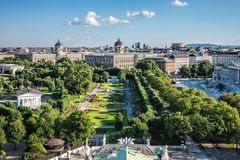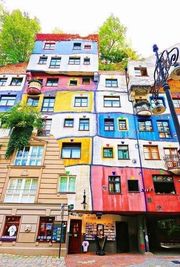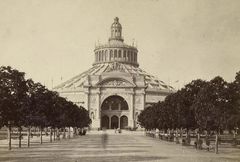Summer 2023
VIENNA – is the most liveable city!
VIENNA – is the most liveable city!

"The Economist" has once again ranked Vienna #1 in the world as the most liveable city!
In the ranking of the Economist Intelligence Unit (EIU), the Austrian capital has achieved the first PLACE for the fourth time in the last five years!
Healthcare system, culture and environment, education, as well as infrastructure and security have earned Vienna the TOP SPOT!
„Current and upcoming EVENTS in Vienna in May 2023“

Interested in music, theater, the opera, museums, and exhibitions?
We’ll be happy to keep you informed about all the dates / schedules and perhaps even let you in on a few secrets too…
Film Festival at Vienna’s Rathausplatz
For 65 days, City Hall Square is once again a pulsating open-air meeting point: The Film Festival at Rathausplatz presents musical highlights of opera, classical, pop, and rock as well as culinary delights from July 1. That's summer in Vienna. Free admission!
It is one of the most popular summer events in the heart of the city and Europe's biggest culture and food festival: The Film Festival at Rathausplatz founded in 1991 and located between Vienna City Hall and the Ringstrasse boulevard. This year again, it will draw hundreds of thousands of fans of good music and food to City Hall Square – with free admission on all evenings.
The culture broadcaster ORF III presents six topical evenings with high-class stage experiences from all over Austria on the screen of the Film Festival:
• Classical stars at Traunsee: live (with a time delay) from the Salzkammergut Festival Gmunden (with Adrian Eröd and Stephen Gould)
• Classics in the Alps: Open-air gala from Kitzbühel (with Elīna Garanča)
• Robert Stolz's operetta Frühjahrsparade live (with a time delay) from the Bühne Baden stage
• Intl. Baroque Days Melk Abbey: Georg Philipp Telemann's Der Tag des Gerichts (with Michael Schade)
• Concert Jazz on a Summer's Day by Viktor Gernot and Simone Kopmayer
• Bregenz Festival: Giuseppe Verdi's opera Ernani
Another tip from the classical program: Violinist Anne-Sophie Mutter, who is celebrating her 60th birthday, revives the best-known sounds of the film music icon John Williams.
The Film Festival at Rathausplatz also presents artists who deal with climate change in music: The German cellist Tanja Tetzlaff plays Bach suites in Suites For a Suffering World and 14 orchestras from around the world brings Vivaldi's The Four Seasons into the 21st century with The [uncertain] four Seasons.
The performances of the Children's Opera Festival commence every Friday at 5.00 pm. Before that, the youngest ones have the chance to romp around in the active program of "Bewegung findet Stadt" at City Hall Park.
A live DJ serves up a good sound in the food area (Th-Sa evenings). Two (live!) concert evenings are planned in cooperation with Kultursommer Wien (July 15: brass music, July 16: choral evening).
33rd Film Festival at Vienna's Rathausplatz 2023
July 1 – September 3, 2023 (daily)
Film starts at nightfall
Food and drink: 11.00 am – 12.00 midnight
Admission is free!
www.filmfestival-rathausplatz.at
Street Art in Vienna: Color Burst

You might think that the whole of Vienna is an exhibition as you stroll through the city. For Vienna is not only home to world-famous museums, but also an impressive open-air gallery. The public areas are adorned by many works of art, street art makes Vienna more and more colorful.
Examples of urban art can be found everywhere in the capital. Out walking or peering out of the window of a bus, tram or subway – all kinds of outdoor artworks reveal themselves beneath the Viennese sky. Often highly imaginative, and usually colorfully designed, a number of the city’s walls, facades and building entrances – as well as the odd subway station – are works of art in their own right. Numerous initiatives have helped outdoor art to flourish in Vienna.
Since its foundation back in 2004, KÖR Wien – an institution dedicated to the promotion of art in public spaces – has initiated and supported close to 300 temporary and permanent artistic projects, including a great deal of street art. Making contemporary art accessible for everyone and encouraging public discourse in the process. The Wien Museum on Karlsplatz, which is scheduled to reopen at the end of 2023 after a major refurb project, offered up the fence surrounding the construction site for street art in 2021 and 2022.
And then there’s the Vienna Wall project: backed by the city, selected walls throughout Vienna have been made available for anyone to use artistically since 2005 – participating locations are clearly marked with Wiener Taube plaques featuring a pigeon symbol. The Danube Canal is undoubtedly the epicenter of street art in the city. Running through the city center, this offshoot of the River Danube is a veritable outdoor exhibition space. Here, the walls, railings and archways are covered with layer upon layer of spray paint. It is also where one of Europe's largest open-air galleries, known in the scene as the Hall of Fame, was created in recent years.
Visions & New Beginnings

On May 1, 150 years ago, the Vienna World's Fair opened. It was the driving force behind Vienna’s evolution into a truly global capital. And the city continues to benefit from the achievements of that time. A journey into Vienna’s past and its future.
The grand opening of the Vienna World’s Fair on 1 May 1873 got off to a bit of a bumpy start: heavy rain flooded the exhibition grounds at Vienna’s Prater park. The influx of visitors on the opening day brought traffic to a standstill. If that wasn’t enough, the landmark Rotunda building, then the widest domed structure in the world at 108 meters across, and lots of the pavilions were not quite finished in time. But that did not stop Emperor Franz Joseph from opening the World's Fair with the words "It is with lively satisfaction that I see the completion of an enterprise whose import and significance I fully appreciate". But “worse” was to come: rather than the 20 million expected, just 7.3 million visitors had passed the turnstiles by the time the exposition drew to a close on November 2, 1873. A cholera epidemic and a stock market crash shortly after the opening day kept many people from traveling to Vienna. The World's Fair tore a gigantic hole in the state's finances.
But in spite of its financial downsides, the World's Fair still paid off. For Vienna. The World's Fair (the first was held in London in 1851) was designed to be a showcase of technology and arts and crafts. Exhibitors from all over the world unveiled their latest achievements. People were looking at the world with fresh eyes. And for Vienna, the second half of the 19th century was already time of visionary thinking and new beginnings. Back then, foundations were laid that are still proving decisive for the high quality of life the city offers to this day: the inauguration of the First Vienna Mountain Spring Pipeline that brought crystal-clear spring water to the capital being just one of many examples.
This technical masterpiece supplied Vienna with fresh drinking water from the mountains of Lower Austria and Styria over 95 kilometers away. The construction of no fewer than six new stations and railway lines suddenly made Vienna a Central European railroad hub. Public transportation and city tourism took off, while new hotels such as the Imperial and the Hansen Kempinski as well as restaurants and cafés such as Landtmann went up on the Ringstrasse boulevard.
The first international trade and public congresses were held in Vienna. This Gründerzeit (literally “founders’ era”) period also saw the emergence of many museums and collections, which continue to be the envy of the world to this day. Traditional handcraftsmanship was a huge hit at the World’s Fair: specialist manufacturers such as J. & L. Lobmeyr (crystal) and Jarosinski & Vaugoin won highly coveted medals for their work. And the famous Strauss dynasty brought classical music to the masses.
In short, Vienna transformed itself from the ground up. And, thanks to the World's Fair, it became a cosmopolitan city with a new identity and spirit driven by urban planning, as well as a burgeoning center of economic, cultural, political, social and technical modernism. In an interview with the weekly newspaper Die Zeit in July 2022 (issue 27/2022) Max Hollein, director of the Metropolitan Museum of Art in New York, said:
"Vienna found its form – now I'm tempted to say: since the fin de siècle around 1900 or, more precisely, since the World's Fair in 1873 in the Prater."
Hollein is right. Even now, 150 years down the line, the Austrian capital is still reaping the rewards of the profound changes initiated back then. Crisp, fresh spring water still flows into the city via the same Mountain Spring Pipeline – something which will be celebrated in 2023. The urban planning of the time continues to facilitate city development zones to this day. Technology, progress and research are booming. The original railroad network laid out back then is still expanding. Today, the city is the most important overnight train hub in the European Union – and the perfect starting point and destination for sustainable rail travel. Vienna is still one of the most successful congress cities in the world. Despite the pandemic, the capital has managed to retain its leading role as a congress and meeting destination: the International Congress and Convention Association (ICCA) ranked Vienna first in its 2021 ICCA Ranking - Destination Performance Index (DPI) report, while the Union of International Associations (UIA) awarded the city fourth place in its 2021 congress ranking which came out in the summer of 2022. And the works of art created in the capital at the turn of the century are among the most valuable of all time (think Gustav Klimt).
But will what is being created in Vienna today still be around in 150 years? – Absolutely! Because Vienna is currently going through another phase of fundamental change and a new “founders’ era”. The city has been booming since the 2000s. It is growing all the time and the population is set to hit two million by 2028. New urban development zones such as Seestadt Aspern and Viertel Zwei, where up to 40,000 people will eventually live and work, are taking shape.
In these new neighborhoods, the focus is on features such as decarbonization, sustainability, green spaces, jobs, culture, leisure and, naturally enough, contemporary living spaces. More than simply residential and working spaces, Vienna’s new urban districts are places that put living first.
To achieve this, all of these new areas have to be integrated into the public transportation network: with this in mind, an entire new subway line is currently being built in Vienna to provide sustainable and carbon-neutral transportation throughout the city all the way to the outskirts. Numerous new, modern hotels are also taking shape in the capital, ready to claim their rightful place alongside their counterparts from the era of the World's Fair, such as the Hotel Imperial or the Hansen Kempinski.
